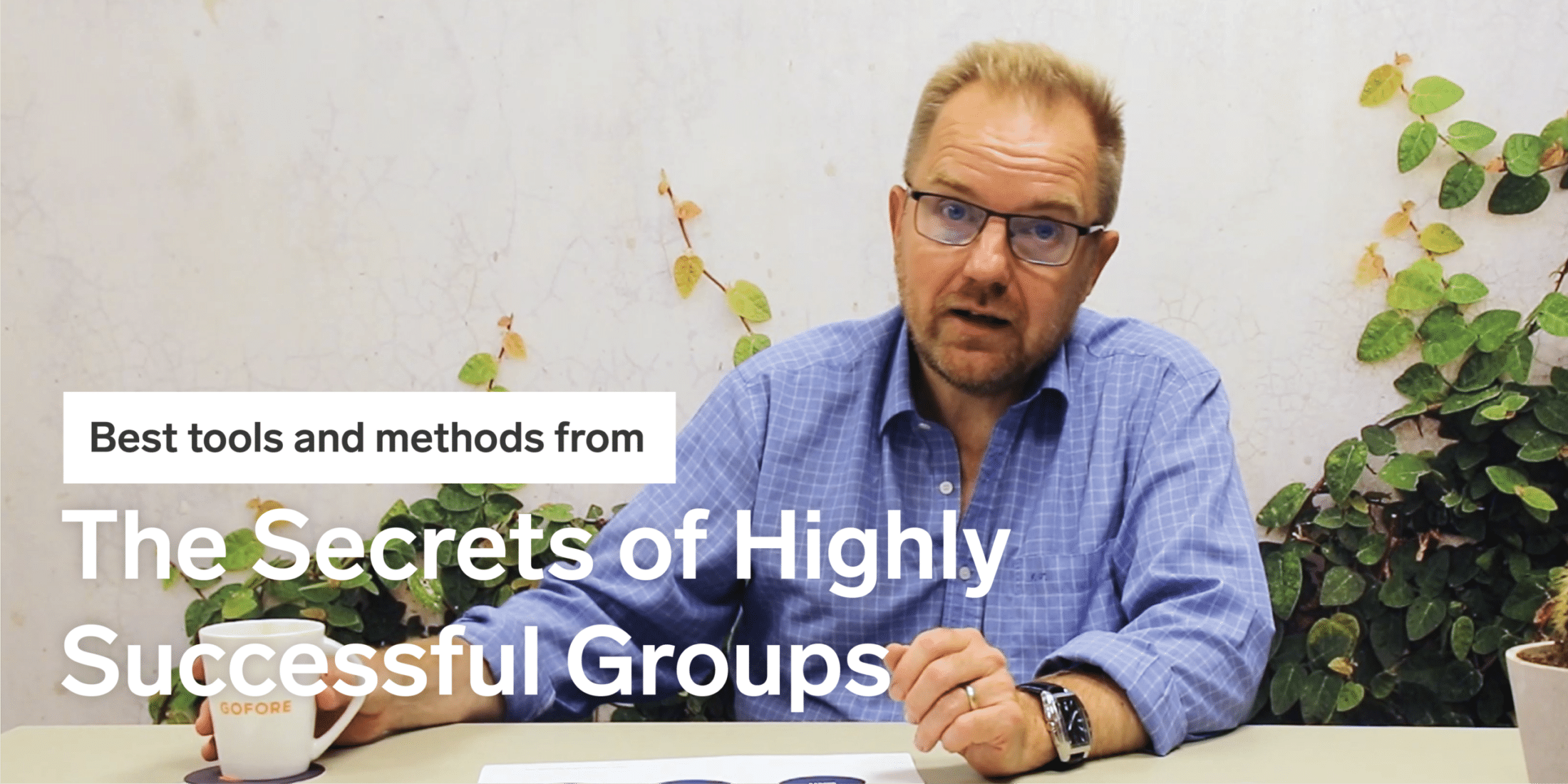The Culture Code – The Secrets of Highly Successful Groups by Daniel Coyle
I want to help you to grow your mindset and share my passion for impact. Thus, in this blog series I have hand-picked the bestselling publications and essential managerial tools. This enables you to make a sustainable renewal to your business and personal life. The goal of the first season is to build a common body of knowledge and starting platform for you. By reading further you will:
- save your scarce reading time on renewal, culture and the best performing teams
- extend your leadership toolbox to support your business decisions
- build your personal growth-mindset, required to excel as an evolutionary leader
Common ground
In this episode, our focus is on the extensive practical research on the best performing groups done by Daniel Coyle.
- You get an outlook of common factors and themes of how the best performing groups operate, what makes those groups tick and how team cohesion is created.
- You get insights on what are those verbal and physical cues of safety, vulnerability and purpose that keep these groups performing and co-operating extremely well.
- In short, you learn what makes the best performing groups in any industry, at any time.
Any culture is always a group phenomenon, as it was reflected on in Edgar Schein´s life-time research covered in the first episode of this series. The building blocks of an organizational culture are its espoused values and daily behaviors. Therefore, no organizational culture change program should be performed, if no real clearly defined performance development challenge or problem of a group exists. Otherwise more harm than good is done throughout the organization, which is very difficult to correct later.
Coyle´s recent research was performed in the fields of education, entertainment, the military, sports, and even crime. This cross-industry organizational research pinpointed best practices of team behaviors within the Pixar and Google design teams, US Special Forces / SEALS and the San Antonio Spurs NBA basketball team. Let´s dig deeper into those verbal and physical cues that keep these groups performing and co-operating extremely well.
Building Safety
How to build psychological safety in a group? According to Coyle group chemistry doesn´t happen by chance. As a leader you need to focus more on your listening skills and body language in different interpersonal situations. As you might have heard earlier, if you want to succeed, use your communication means (eyes, mouth and ears) in the same ratio that you have been provided with them. Think about your leadership communication – do you speak more than you listen to your team and colleagues?
Another way to make your fellow members safer in a group is to show transparency by being approachable, treating others warmly and encouraging people to participate. As it has been tested by MIT psychologists and evidenced in real-life, at Google, without a status or seniority way of working this encourages people to become closer to each other. The outcome has been to produce more innovative ideas to the market faster.
Thus, in order to feel a sense of belonging to a group there must be safety, some type of connection established, and an expected future shown. In the book there was a great example of such an environment created by the head-coach, Gregg Popovich, of the San Antonio Spurs NBA basketball team. He has been famous for being extremely rigid on the court, but very caring, thoughtful and warm outside the court. He went out of his way to find ways to show caring towards his team of coaches and players both during moments of joy and hardship. He had a high mutually inclusive respect towards his team which resulted in high motivation and consecutive successes as a unified coherent professional basketball team.
Tools for growth-minded leaders
What & why?
- Group chemistry builds powerful connection
- To be safe and close allows more innovation, and faster
- Presence of safety strengthens belonging
How?
- More listening. less talking
- Showing transparent leadership
- Being approachable and thankful
Sharing Vulnerability
Historically, a leader’s role in organizations has been the authority who knows everything and makes no mistakes. This is quite different to the new expected role of leadership to be vulnerable. Vulnerability in a business leadership context means to be able to admit and accept one’s own weaknesses, as well as to ask for help whenever needed. This does not happen when there is no trust towards every single member of the group.
Developing trust within a group is to open individual insecurities and weaknesses for the entire group. Many recent studies have evidenced that for a group to perform at its best, there needs to be trusted relationships present. This means in practice that as a member of a group you must be able to put your own well-being and priorities after the group´s success. You need to show a habit to develop your courage and candor. Be authentic in speaking the truth out loud and be able to listen objectively to find solutions together. Genuinely caring and showing empathy towards your group members are key competencies of a leadership growth journey which are expressed in words of ‘we’ and ‘us’, rather than ‘me’ and ‘I’.
Tools for growth-minded leaders
What & why?
- Showing weaknesses leads to increased co-operation
- Calmness helps in coping with stress and pressure
- Vulnerability loop, insecurities tackled, set trust in motion within a group
How?
- Sharing mutual weaknesses as a group, it’s the leader´s responsibility to start
- Putting the group´s well-being over personal needs and wants
- Developing a habit of helping others
Establishing Purpose
Purpose is the common noble cause towards which the best performing groups are heading while helping each other. Often this intent is expressed in credos which are short action and future-oriented taglines. The credo is showing everyone’s purpose in the organization, common shared identity and how success will look like. It promotes direction and togetherness.
In order to achieve a group´s purpose there needs to be proficiency and creativity simultaneously that drives the group further. Every group member must be reminded often thru a multitude of communication means, both individually, and as as a group of their sense of belonging. Ranking priorities helps to clarify focus. Acceptance and readiness to fail speeds up innovations and results.
In short, for the team to perform at its highest level, there needs to be mutual respect, trust, transparency, mutual support and internal motivation for continuous learning.
Tools for growth-minded leaders
What & why?
- Credos describe everyone´s purpose within the group
- Common identity and goal
- Empathy over others comes before skills
How?
- Sharing signals of mutual support, motivation and connectedness, often
- Ranking business priorities in a group
- Giving a sense of direction with readiness to fail
Secrets of highly successful groups
- Relationships > prioritizing harmony to build up a strong foundation and safety
- Authenticity > showing vulnerability creates a platform for ultimate performance
- Purpose > building identity by clarifying individuals’ purpose and key tasks
- Parallel focus > proficiency (= same quality all the time) and creativity (new things from scratch)
- Catchphrases & Credos > though cliché, important for common direction and sense of belonging
- Transparency > in information, leadership, weaknesses and mistakes
- Retrospectives > learning and growth approach for better results
Key question for you to ask yourself when becoming a leader of high performing groups
- How well are you prepared to express safety, vulnerability and purpose in public?
The next blog will be about building cultures of freedom and responsibility. Keep following.
About
Jere Talonen – Your co-pilot helping you to bridge the gap between strategy, values and behaviours from the boardroom to the shop floor by combining EX with CX. In the blog series, he shares his learnings from a multi-industry international career extending over 20 years as a leader, entrepreneur, business coach & consultant, as well as an executive team and board member. Sharing is caring. Currently, Jere acts as Principal Consultant – Recoding Culture and the Future of work at Gofore Plc.
.



